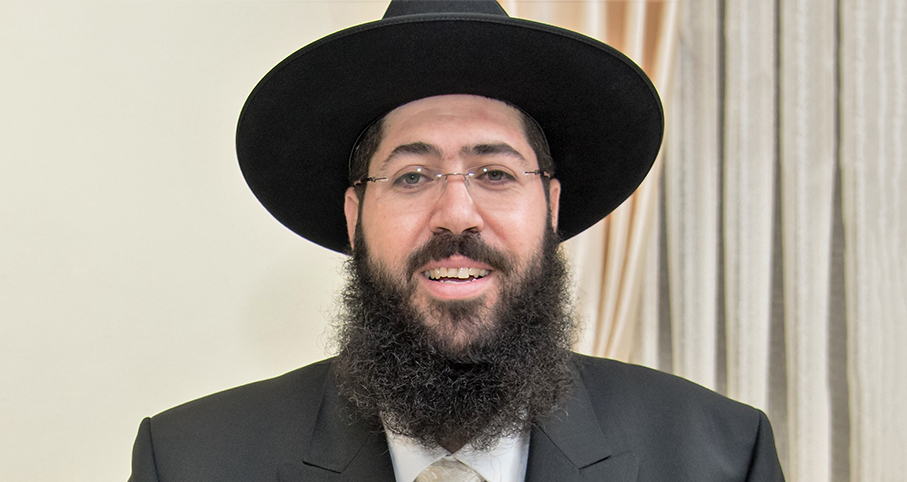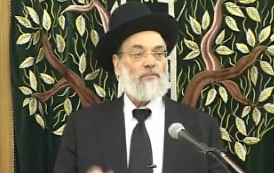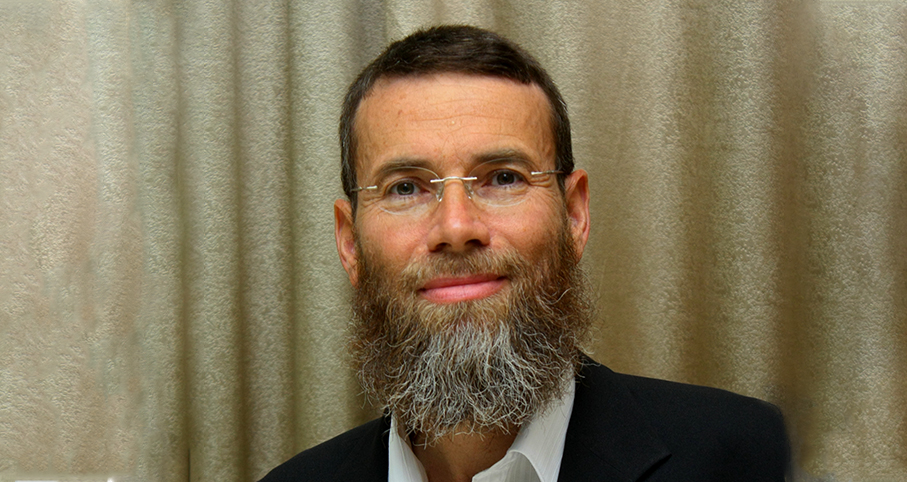Beit Midrash
- Torah Portion and Tanach
- Shmot
- Ki Tisa
- Shabbat and Holidays
- Purim & The Month of Adar
- The Laws of Purim
An inebriated Purim drop-in damaged some property in our house. May we collect damages?
Question #2: Hurt at a Wedding
At a wedding, two people collided, causing one of them to break a leg and lose work time. Is the person who hurt him liable?
Question #3: Purim Dress
Is it permitted for a man to wear a woman’s dress on Purim?
Introduction:
In a previous article, we discussed whether someone who damaged property in the course of festivities is required to make compensation. We learned that there are sources on this topic dating back to the time of the Beis Hamikdash!
As we noted in the earlier article, early sources in the Mishnah and Gemara discuss whether one is required to pay for harm that occurred in the course of a celebration. According to Rashi’s interpretation, after the completion of the hakafos in the Beis Hamikdash on Hoshanah Rabbah, the adults would grab the lulavim and esrogim from the children and eat the esrogim. Rashi explains that there was no prohibition involved, because this was part of the holiday festivities.
Most, but not all, authorities accept this approach. The Beis Yosef (Orach Chayim 695) quotes some of the sources that excuse the merrymaker from damages, but states that this immunity exists only in communities where this type of rowdy behavior is commonplace. He then notes that in the area in which he lives, this type of raucous celebrating does not exist. Therefore, we understand why he omits any discussion of exempting merrymakers from damages in the Shulchan Aruch. On the other hand, numerous other authorities, predominantly Ashkenazim, exempt a person from paying damages that occur as a result of mitzvah gaiety (e.g., Mordechai, Sukkah 743; Agudah, Sukkah; Terumas Hadeshen 2:210; Yam shel Shelomoh, Bava Kama 5:10). The Rema rules this way in three different places (Orach Chayim 695:2; 696:8; Choshen Mishpat 378:9), and it is accepted subsequently as normative halacha.
Limitations
Notwithstanding the generally accepted approach that a merrymaker is exempt from paying damages, there are exceptions.
Physical injury
Does this exemption of liability apply, even when there is physical injury? The Magen Avraham raises this question and notes that it is the subject of a dispute among halachic authorities. He quotes the Keneses Hagedolah, who rules that one is obligated to pay for physical harm, whereas the Agudah rules that one is not. I noted in the first part of this article that the Terumas Hadeshen appears to agree with the Agudah that one is exempt, even when there is physical injury. His case was someone who used holiday festivities as an excuse to push another person very hard, causing major injury. The Terumas Hadeshen obligated him to pay, because the injury was intentional, but seemed to accept that if the damage had been a result of merrymaking, there would be no obligation to pay.
Why is he exempt?
Until now, we have been talking about whether a merrymaker is excused from financial compensation for damages, and we have discussed sources that exempt him, at least under certain circumstances, and other sources that do not. The next step in our discussion is to understand why he should be exempt. The halachic rule is that odom mu’ad le’olam, a person is always responsible to pay for damage that he causes (Mishnah, Bava Kama 26a). Why is there an exception for a merrymaker?
I have found three halachic approaches that suggest why the person responsible for causing damage is exempt from paying. As we will see, there are practical differences in halacha that result from the different approaches.
1. Implied mechilah
When people participate in an activity together, there is an implied mechilah that one will not collect damages.
2. Hefker beis din hefker
In order to not put a damper on people’s celebrating, Chazal exercised their authority of hefker beis din hefker (Bach, Yoreh Deah 182).
3. Mitzvos are different
There is a special exemption for people participating in a mitzvah.
Not mutually exclusive
We should note that the three reasons we have mentioned are not mutually exclusive. A halachic authority might hold that two or three of the reasons apply. In other words, someone might contend that whenever damage occurs in the course of a simcha shel mitzvah, the party responsible is exempt for any of the reasons provided.
1. Implied mechilah
One possible reason to exempt the merrymaker from damages is because of a principle that when people participate in an activity together, there is an implied mechilah that one will not collect damages. Here is an early example of such a ruling:
Two people were wrestling. In the course of their bout, one of the combatants knocked the other to the floor and then pounced on him. Unfortunately, his opponent suffered serious permanent injury as a result. The question asked of the Rosh is whether there is an obligation to pay damages.
The Rosh ruled that two people who decide to wrestle agree implicitly that each is mocheil the other for damages that happen as a result of their activity. Therefore, one cannot afterward submit a financial claim for injury (Teshuvos HaRosh #101:6). The Rosh is teaching us a halachic principle that one cannot claim damages that result from an activity that he joined willfully. Similarly, if someone stomps inadvertently on another person’s foot during dancing at a wedding or on Simchas Torah, there is no requirement to pay damages. Everyone knows that, in the course of the dancing in a crowded shul on Simchas Torah or at a wedding, occasionally someone is going to step on your foot. It is quite clear that everyone accepts that this may happen and is mocheil the person responsible. If you want to be certain not to get hurt, don’t participate in the dancing.
Minor damage
Notwithstanding that the logic asserted by the Rosh is undoubtedly true, it cannot be the only reason for the halacha exempting merrymakers from damage, for the following reason: According to Rashi’s understanding of the Mishnah quoted above, adults took the lulavim and esrogim of children, and this was acceptable because it was part of the holiday celebration. Yet, children do not have the halachic ability to be mocheil. Thus, at least according to Rashi, the heter releasing a merrymaker from liability must be based on a different halachic principle.
2. Hefker beis din hefker
The principle of hefker beis din hefker allows a rabbinic court, or someone with equivalent authority, the halachic ability to forfeit a person’s ownership or claims. In our instance, it means that they rescinded the claimant’s rights to collect for damages that he incurred. The Bach assumes that the reason for exempting a merrymaker from paying damages is because Chazal exercised their authority of hefker beis din hefker in order not to put a damper on people celebrating (Bach, Yoreh Deah 182). In other words, someone may be reluctant to join the dancing at a wedding or on Simchas Torah out of concern that he may inadvertently hurt someone and be liable for damages. In order that people celebrate without reservation, Chazal exempted participants in certain semachos from paying damages.
This approach explains why adults were permitted to commandeer the property of children as part the Sukkos celebration, even though children cannot be mocheil. Although a child’s statement that he forgives someone’s liability to him has no legal status, Chazal have the ability to forfeit such a claim.
3. Mitzvos are different
Here is yet another explanation why a merrymaker is exempt from paying damages: This is because the merrymaker was performing a mitzvah whose proper fulfillment precludes being as careful about one’s actions as one ordinarily must be. We find a similar idea in the following passage of Gemara (Bava Kama 32a): Someone running through a public area – an action that is otherwise considered unacceptable and liable – is exempt from paying damages if, in his rush to be ready for Shabbos, he collides with another person. Since he is racing for a mitzvah, he is not liable (see Piskei Rid ad locum).
The same approach can be applied to our merrymaker. He will be unable to entertain properly if he is constantly thinking of the legal responsibility that might
result from his actions. Therefore, as long as his celebrating is within normally accepted limits, he is exempt from damages that result. Later in this article, I am going to suggest that an early halachic authority, Rav Yehudah Mintz, usually called the Mahari Mintz, held this way.
Hurt at a wedding
At this point, let us examine the second of our opening questions: At a wedding, two people collided, causing one of them to break a leg and lose work time. Is the person who hurt him liable?
According to the Terumas Hadeshen and the Agudah, there is no requirement in this instance to pay damages, since they rule that a merrymaker is exempt from damages even if there was physical injury. In this instance, the Bach would also agree that he is exempt since, although there is physical injury, it is likely to heal, and he rules that as long as no permanent damage resulted, a merrymaker is exempt from making compensation. However, it would seem that the Keneses Hagedolah, who rules that physical injury is not included in this exemption from compensation, would require our merrymaker to pay.
Purim Dress
At this point, we will examine the third question asked above: "Is it permitted for a man to wear a woman’s dress on Purim?"
The Mahari Mintz was one of the greatest halachic authorities of 15 th century Ashkenaz. Born in Germany, he was the rav of Padua, Italy, for 47 years, where he founded one of the most famous yeshivos of his era. (To play a bit of Jewish geography, the Maharam Padua, one of the Mahari Mintz’s renowned disciples, who married the Mahari Mintz’s granddaughter and also became his successor, was a cousin of the Rema.)
In a responsum, the Mahari Mintz addresses whether it is permitted for men to wear women’s clothing as part of the Purim celebration and, vice versa, whether a woman may wear men’s clothing. The Mahari Mintz quotes a mechutan of his, Rav Elyakim – whom the Mahari Mintz describes as knowing all areas of Torah and being the greatest halachic authority of his time – as having permitted this. The Mahari Mintz agrees with his mechutan, explaining that the prohibition against wearing other gender clothing is only when one’s interest is to dress or act like the other gender, but not when one’s goal is to celebrate. He quotes as proof an early ruling of the Riva, one of the baalei Tosafos, that all food grabbed by young men in the course of the Purim celebration is not considered stolen, provided that this happened sometime between the reading of the Megillah at night and the end of the Purim seudah (Shu"t Mahari Mintz, end of #16). Thus we see that celebrating Purim can sometimes exempt one from other obligations.
The Bach took great issue with the Mahari Mintz’s ruling permitting the wearing of other gender clothing on Purim. Allow me to quote some of the Bach’s discussion on the subject. "One should note that there is a practice on Purim that men wear women’s clothing, and vice versa, without anyone protesting that this is a violation of halacha. According to what I explained above, wearing clothing of the opposite gender to appear like them is certainly forbidden. Rav Yehudah Mintz already discussed this issue in his responsum, saying that, since their intention is to celebrate Purim, there is no prohibition, similar to the ruling that a man may shave his underarm hair when it is uncomfortable (an act that is usually prohibited, because of the prohibition of men wearing women’s clothing and performing activities that are considered feminine). However, it appears to me that what Rav Yehudah Mintz wrote is inaccurate, since Rabbi Eliezer of Metz [one of the baalei Tosafos, a disciple of Rabbeinu Tam, who lived in the 12 th century] wrote explicitly that one may not wear clothing of the other gender in order to enhance the celebration of a choson and kallah… Without any question, had Rabbi Yehudah Mintz seen the words of Rabbi Eliezer of Metz, he would not have written what he did. Rabbi Yehudah Mintz also wrote that, since there is the established heter of grabbing food on Purim and it is not considered theft, similarly, changing clothing [to that of the other gender] is permitted. However, his logic here is erroneous, because in regard to money, there is a halachic rule of hefker beis din hefker… however, the city elders cannot permit something that is prohibited [such as wearing clothing of the other gender]" (Bach, Yoreh Deah 182).
Notwithstanding the Bach’s disagreement, the Rema (Orach Chayim 696:8) rules that it is permitted to wear clothing of the other gender as part of the celebration of Purim, provided that one does so only on the day of Purim itself. (We should note that the Mishnah Berurah and many other late authorities frown on the practice.)
The question that we need to address is, what did Rabbi Yehudah Mintz hold is the reason to exempt a merrymaker from paying for damage that he caused? He could not have held either of the first two reasons we mentioned above, since neither reason would allow someone to celebrate by wearing clothing of the other gender, and Rabbi Yehudah Mintz compares the two practices. Apparently, he understood that the basis for exempting someone from payment is because he was involved in performing a mitzvah (celebrating Purim), and that wearing clothes of the opposite gender is prohibited only when one’s motivation is to look somewhat like the other gender, but not when one is doing so to perform a mitzvah.
Conclusion
In general, we must realize that we should perform Hashem’s mitzvos with much enthusiasm. Although this is an important value, we must also always be careful that our enthusiastic observance of mitzvos does not cause harm. Nevertheless, we now know that there are instances when someone might be exempt from payment for damage he caused while he was performing a mitzvah, particularly when the mitzvah involved celebrating.
This Shiur is published also at Rabbi Kaganof's site

The Thirteen Attributes
Parashat Ki Tissa
Rabbi Reuven Grodner | 5763
Israel, Gentiles, & Gog U'Magog
Rabbi Zalman Baruch Melamed | Adar I 16 5782

The Sin of the Golden Calf and the World Wars
Rabbi Eliyahu Maman | Adar I 17 5782






















